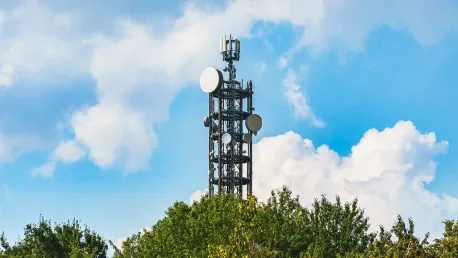For those who are not telecommunications professionals, HSPA is responsible for the “H” on top of your smartphone screen. It shows that mobile data traffic is available.
The abbreviation stands for High Speed Packet Access. HSPA employs WCDMA (Wideband Code Division Multiple Access) protocols, in order to extend 3G mobile communications networks. It is in fact a two mobile codes’ amalgamation (High Speed Downlink Packet Access (HSDPA) and High Speed Uplink Packet Access (HSUPA). This supports increased data peak rates, reduces latency and provides better downlink/uplink system capacity.
Compared to 3G communications, HSDPA is five times faster; therefore it is also known as 3.5G. The common alternative consists of 4G networks (LTE, as in Long-Term Evolution or Mobile WiMAX).
What pluses did HSPA bring to mobile telecommunications?
By using HSPA, operators upgraded their networks, allowing them to run at broadband speeds. This technology was essential in supporting voice services combined with mobile broadband data services. Such is the case for smartphones. Its more evolved version, in terms of speed and capacities, is HSPA+.
Both HSPA and HSPA+ seamlessly integrate the Universal Mobile Telecommunication System (UMTS) architecture. They allow large data volumes to travel in and out of users’ mobile phones. The hardware beneath these capacities is digitally standardized. It is also set up and tested to provide consistency and reliability within the networks and in-between them.
What will happen to HSPA?
The 2009 book on HSPA performance and evolution by Pablo Tapia, Jun Liu, Yasmin Karimli, and Martin Feuerstein is an interesting resource. It captures the industry’s wonderment related to HSPA’s fate. Even before fully developing this communication technology that provides a “strong enough and competitive platform for operators to offer highly competitive products for many years to come”, some professionals were already chasing future (at that time) technologies, such as LTE.
We can guess that the soon-to-emerge 5G might fall into the same category for some. Especially that they already invested heavily in fully mastering HSPA. Now these professionals will have to face a new crucial decision. Should they re-adapt once more? Should they reconsider which way to go?
Nevertheless, we have seen how communications boomed in a span of just a few years. Nowadays social networks connect people worldwide. Each of the users acts as a source for more and more data to be sent via the digital environment and stored there to be accessed by countless users. What seemed to be enough yesterday suddenly becomes insufficient. New and perhaps unexpected (for some) needs emerge.
How do mobile technologies rank?
In 2014 HSPA compared with LTE as one mountaintop with the base of a totally different mountain that aims higher. Now HSPA is still present, although it may well be seen as belonging to a slower lane. By comparison, 5G enables a better, faster lane data transmissions environment. It also has a better IoT-adapted architecture.
The WDCMA technology still comes through as dominant for the current and foreseeable time. For example, check this mid-2015 whitepaper on the Americas’ mobile broadband evolution. It estimates that downlink improvements are worth investing in, since the more traffic-less spectrum equation will remain the leading goal in carriers’ activity.
The same study mentions how a considerable increase in traffic/user, as well as in users’ numbers, manifested itself in HSPA networks during 2012-2013. Nevertheless, it is worth underlining the moment of the study. The massive carrier LTE adoption is referenced to the December 2014 moment and onward. LTE emerged on the market in 2010 – therefore, even if LTE existed back in 2012-2013, it had not been fully adopted.
Near future expectancy
Now 5G is on the roll, with Ericsson and others trying to meet the 5G bold deadlines. It seems that HSPA’s persistence will depend on the time needed for the Telco industry to move onto the next level. Variables come from adopting whichever more advanced technology the professionals choose. It is also up to the deployment region and the available funding. The customers’ specific data traffic needs also set the tone. It is somehow logical that at some point LTE will be pushed downwards by 5G. Subsequently, it will replace HSPA in ranking, as well as in market penetration aspects.
Time-wise, AT&T expanded its 5G trials in 2016, preparing for the next generation carrier ecosystem. They announced two estimated adoption deadlines: the 3GPP Phase 1 in 2018 and the 3PP Phase 2 at the end of 2019.
Lets consider how various network signal technologies define (GPRS, EDGE, 3G, HSDPA, HSPA+ and 4G LTE). It is obvious that a major point of interest, and in the same time a crucial plus only appears in LTE. This technology supports HD video streaming – a thing that nowadays it is both strongly pushed, as well as successful. It is capable of sustaining it in all Internet communications, from browsing and networking to messaging services.
How much until obsolescence?
In these circumstances, one might ask why HSPA would remain in use. Even the abbreviation has been taken by the equally tech-related Health Systems Performance Assessment activity… Well, what is clear is that HSPA also evolved (into HSPA+). Other technologies in the past have met similar moments of expected stagnation, only to re-emerge in force once the industry figured out what else to link them to.
Until new developments, it is useful to remember how HSPA now characterizes 600 operator deployment commitments in 218 countries. This includes 415 commercial HSPA+ networks in 173 countries.
And while operators consider getting ahead in the 4G or even 5G race, some still wonder why the rush for new tech. This already existing technology clearly has not yet reached its best. The answer resides in spectral efficiency. HSPA could in fact be perfected instead of desisted, and it might be too soon to make a call for its future.









